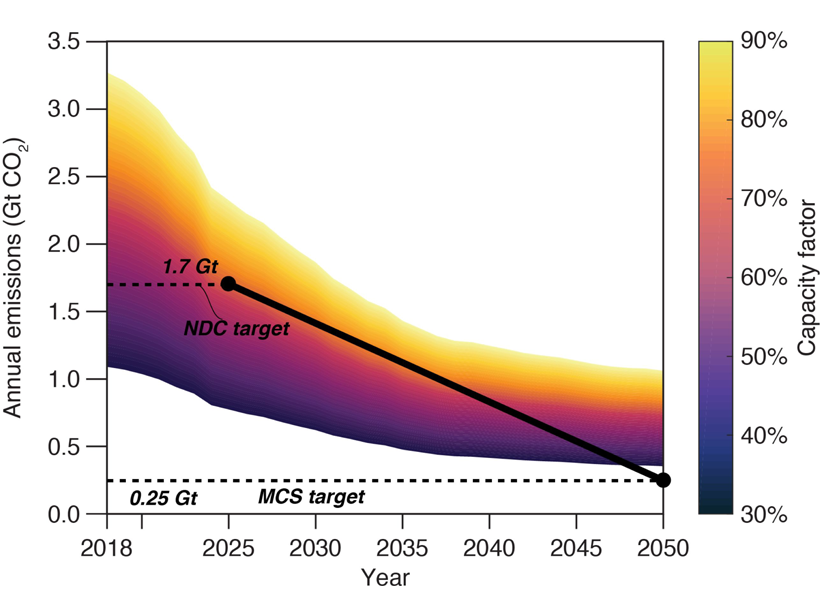Source: AGU Advances
From 2000 to 2018, CO2 emissions from the U.S. power sector decreased by 24%. This is primarily attributed to increased use of natural gas for electricity, as gas-fired plants emit roughly half the CO2 per megawatt-hour of coal burning plants. In a novel analysis, Shearer et al. [2020] examine the long-term implications of the natural gas boom from the perspective of “committed emissions”—the cumulative future CO2 emissions from fossil fuel energy infrastructure assuming average lifetimes and utilization rates. They find that the relative decrease in committed emissions is much smaller than the decrease in annual emissions, due to the rapid increase in newer gas-fired power plants. Methane leakage would further reduce this offset. If operated as historically, currently operating coal and gas plants are incompatible with U.S. pledges under the Paris climate agreement, requiring a substantial reduction in the capacity and/or lifetime of these plants—even if no new fossil capacity is added.
Citation: Shearer, C., Tong, D., Fofrich, R., & Davis, S. J. [2020]. Committed emissions of the U.S. natural gas boom. AGU Advances, 1, 2020AV000162. https://doi.org/10.1029/2020AV000162
—Don Wuebbles, Editor, AGU Advances
Text © 2020. The authors. CC BY-NC-ND 3.0
Except where otherwise noted, images are subject to copyright. Any reuse without express permission from the copyright owner is prohibited.

